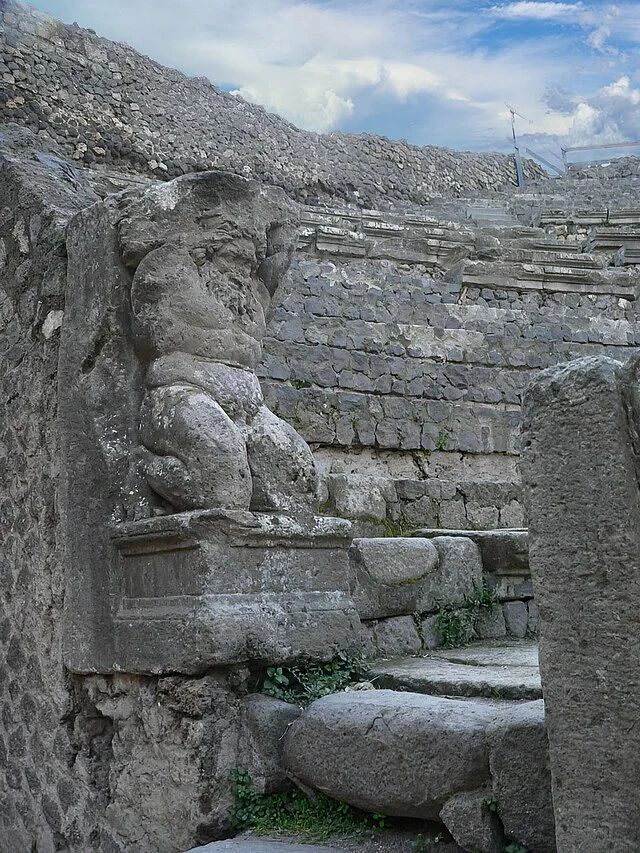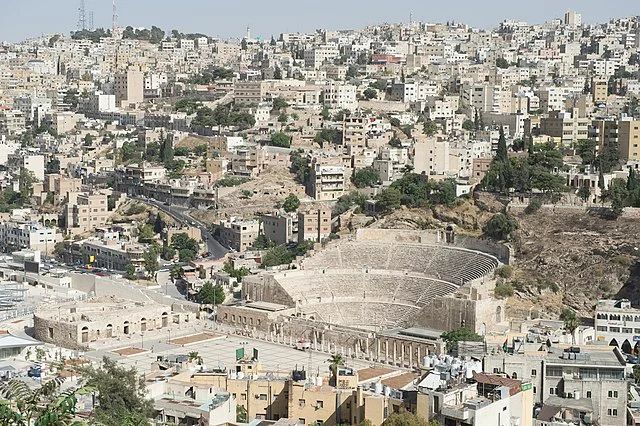The Odeon Theater in Amman, Jordan, is a significant example of Roman architecture. Constructed in the 2nd century AD, it reflects the cultural and architectural practices of the Roman Empire in the region.
Get your dose of History via Email
Historical Context

The Odeon Theater was built during a period when the Roman Empire exerted significant influence over the Levant. Amman, known as Philadelphia during the Roman period, was part of the Decapolis, a group of ten cities on the eastern frontier of the Roman Empire. These cities were centers of Greek and Roman culture in an otherwise Semitic region. The theater’s construction aligns with a broader trend of urban development and cultural integration under Roman rule.
Architectural Features

The Odeon Theater is a small, semi-circular structure, typical of Roman odeons. It is designed to accommodate an audience of around 500-600 people. Unlike larger theaters, odeons were primarily used for musical performances, poetry readings, and other cultural events rather than large-scale dramas or gladiatorial games.
The theater is built from local limestone, which is common in the region. The seating area, or cavea, is divided into two sections by a diazoma, a horizontal walkway that separates the lower and upper tiers of seats. This division reflects the Roman practice of segregating audiences based on social class. The stage, or orchestra, is a simple, flat area at the base of the seating, which would have been used by performers.
One of the unique features of the Odeon in Amman is its wooden roof. While most Roman theaters were open-air, the Odeon likely had a wooden roof to enhance acoustics. This roof would have provided better sound quality during performances, a crucial feature for a venue intended for musical events.
Restoration and Preservation

Over the centuries, the Odeon Theater fell into disrepair. However, in the 20th century, efforts were made to restore and preserve this historical site. In the 1950s and 1960s, significant restoration work was carried out, particularly on the seating area. The restoration aimed to return the theater to a state that reflects its original appearance during the Roman period.
Today, the Odeon is part of the larger archaeological complex in downtown Amman, which includes the Roman Theater and the Nymphaeum. It remains a site of historical interest and is occasionally used for cultural events, continuing its original purpose as a venue for performances.
Cultural Significance
The Odeon Theater in Amman is more than just an architectural relic; it is a testament to the cultural synthesis that occurred under Roman rule. The theater’s design and function reflect the blending of Roman and local traditions. The continued use of the site for performances today highlights the enduring legacy of Roman cultural practices in the region.
In addition, the Odeon serves as a reminder of Amman’s historical significance as a city that has been continuously inhabited for thousands of years. It reflects the city’s role as a cultural and economic hub during different historical periods, from the Roman era to the present day.
Conclusion
The Odeon Theater in Amman stands as a well-preserved example of Roman architecture in the Levant. Its historical context, architectural features, and cultural significance make it an important site for understanding the Roman influence in the region. The ongoing preservation efforts ensure that the Odeon remains a valuable part of Jordan’s archaeological heritage, connecting the past to the present through both its physical structure and its continued use as a cultural venue.
Source:

